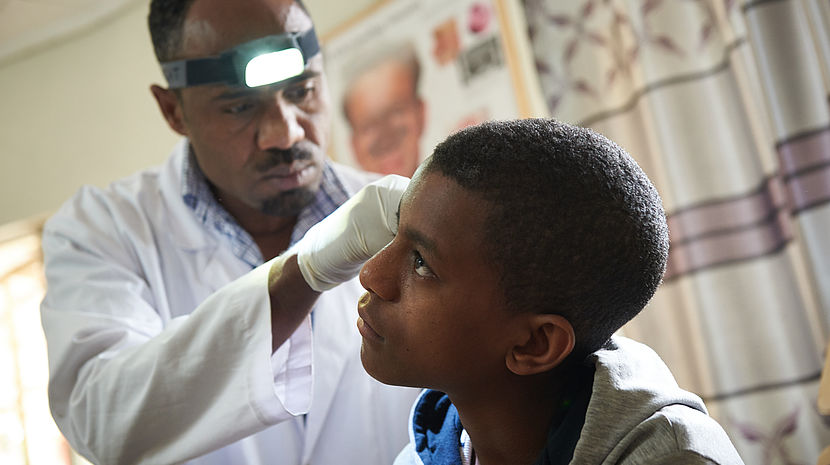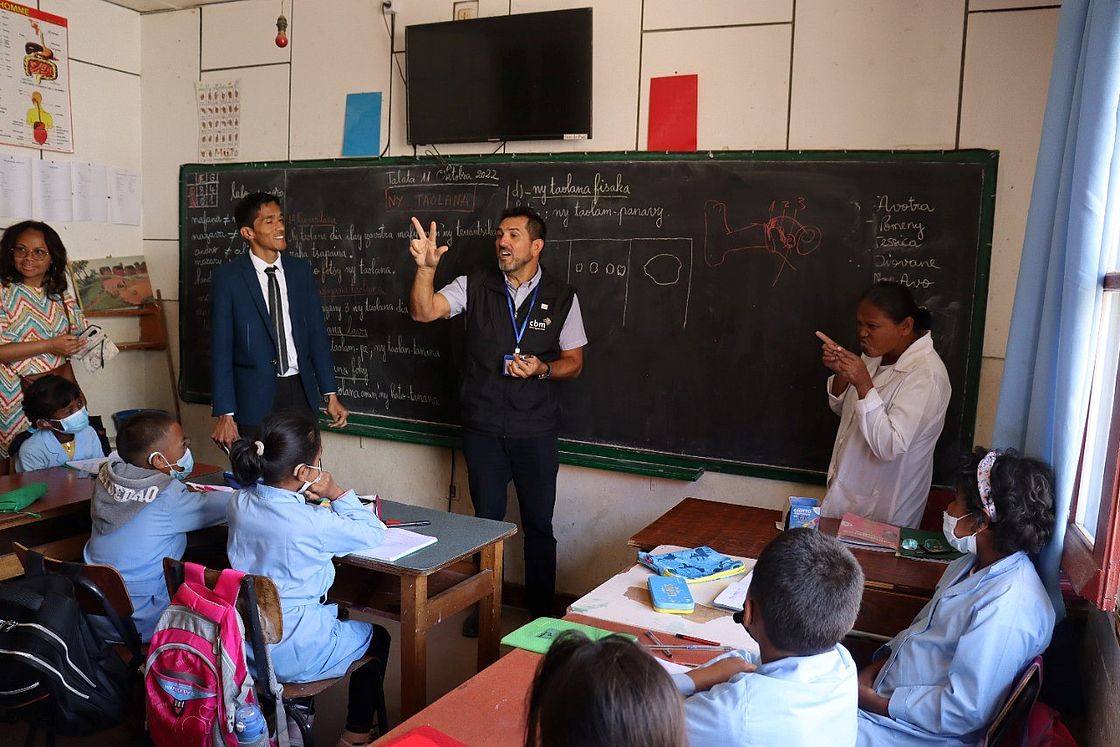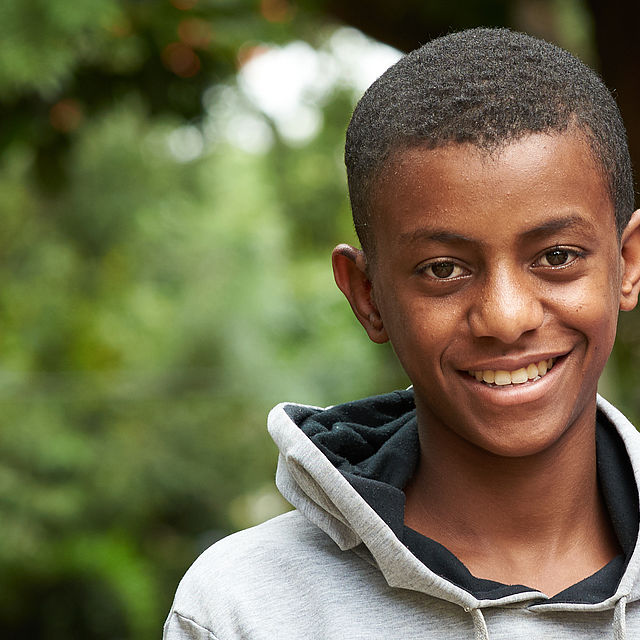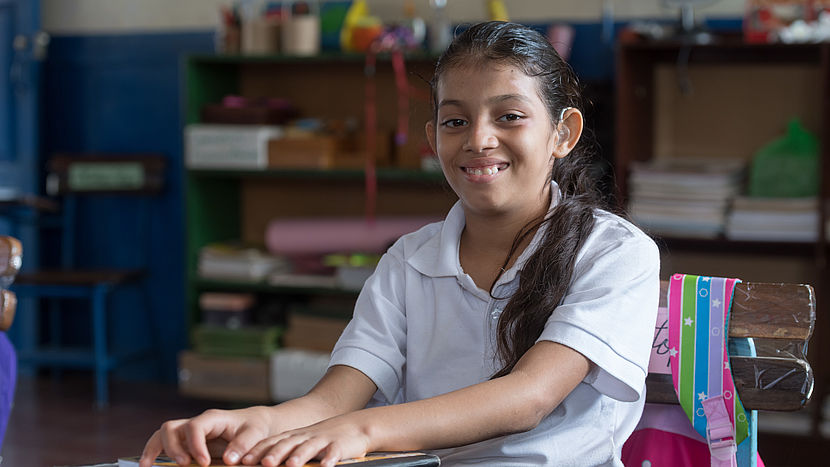World Hearing Day 2023:
CBM Contributes to WHO Ear and Hearing Care Training Manual

©CBM
CBM adopts a comprehensive approach to ear and hearing care (EHC), providing children and adults with access to ear, nose and throat diagnostic and treatment services.
CBM has collaborated with the World Health Organization (WHO) to develop a new Primary Ear and Hearing Care Training Manual, which is launched to mark World Hearing Day on 3 March.
We worked with WHO to shape the content of the manual. Our project partners and country offices worked with community health workers, doctors, audiologists and ear, nose and throat specialists to test and evaluate the training tool in the field. The result of this collaboration is a practical guide for the prevention, detection and treatment of hearing loss and common ear diseases that cause hearing loss.
The guide launched today is primarily aimed at health workers and doctors working in primary healthcare and serving people either in health facilities or in communities. It is intended to be administered by a trainer/educator who is familiar with ear and hearing problems, their assessment and treatment. It is accompanied by a trainer’s handbook.
The manual also contains several stand-alone modules. Included are accompanying resources that can be printed and used to raise awareness in the community. This is part of CBM’s long-term strategic partnership with WHO. We also contributed to the World Report on Hearing, published in 2021, and the first training manual in the series, the ‘Basic Ear and Hearing Care Resource’ published in 2020.
CBM and the World Report on Hearing
Why CBM Supports Ear and Hearing Care
People with hearing impairments struggle with many problems, ranging from social exclusion to economic hardship to low educational opportunities.
There are many causes of hearing loss and deafness, which can affect people at different stages of their life. Some of them include noise, age-related hearing loss and ototoxic drugs that damage the inner ear. Natural causes of hearing loss include congenital or early-onset hearing loss in childhood and chronic middle ear infections. Early identification of hearing loss and ear diseases is key to effective management.
More than 1.5 billion people currently suffer from some degree of hearing loss, which could increase to 2.5 billion by 2050. In addition, 1.1 billion young people are at risk of permanent hearing loss from listening to music at loud volumes over prolonged periods of time.
The World Report on Hearing shows that evidence-based and cost-effective public health interventions can prevent many causes of hearing loss. For productive and quality hearing health, everyone must have access to ear and hearing care.

CBM
“People with hearing impairments face multiple challenges, from social exclusion to economic hardship and low educational opportunities. Health measures could prevent up to 60% of causes leading to hearing loss in children in low or middle-income countries. This is why CBM works with local partners around the world both to prevent the avoidable causes of hearing impairments and to support accessible, inclusive ear and hearing care services for everyone,” says Diego Santana-Hernandez, Senior Ear and Hearing Care CBID Advisor.
A Comprehensive Approach to Hearing Loss Prevention
CBM adopts a comprehensive approach to ear and hearing care (EHC), providing children and adults in countries such as Ethiopia, Madagascar, and India with access to ear, nose and throat diagnostic and treatment services. In 2021, CBM provided 379,300 people with ear and hearing care.
CBM approaches to ear and hearing care include:
- Raising awareness, early diagnosis and treatment, and prompt referral to specialised services;
- Motivating families regarding hearing loss prevention and care;
- Promoting good hearing care practises leading to better knowledge about hearing loss in the community;
- Identification of hearing loss, referral, and follow-up; and
- Supporting families of children diagnosed with hearing loss or undergoing rehabilitation, including support to access inclusive education.
“Our work has been so powerful because it is comprehensive. It’s not only about health, but about working in the community through a Community Based Inclusive Development approach and providing education in the broader sense: formal and non-formal, raising awareness and building connections between health workers and the community so people with hearing impairments are included in all areas of life,” says Santana.
For example, in Madagascar, two CBM projects, the MAHENO ENT project and the AKAMA School for the Deaf and Hard of Hearing and Resource Centre, supported each other. The MAHENO project provided ear and hearing care and surgery, with a special focus on vulnerable patients. Deaf and hard of hearing learners from the MAHENO project were referred to AKAMA. At the same time, the AKAMA school referred its learners who need additional treatment to MAHENO. In Ethiopia, CBM trains ENT doctors in ear surgery, provide equipment and consumables, and offers surgeries and hearing aids.

Find out more!
Read about CBM's work in Ear and Hearing Care
Watch our video about the key elements of Ear and Hearing Care
